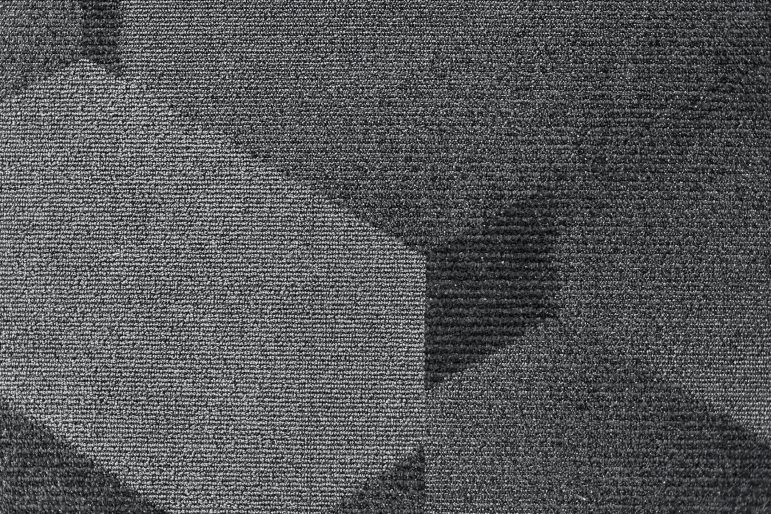Cleaning floors and carpets is a vital part of interior cleaning and maintenance. But, as with any chemical cleans, the key to success is understanding the chemicals. When considering carpet rinses, both acidic and alkaline rinses offer strong results in removing soils, but each provides particular usefulness and considerations under specific conditions.
Tom Forsythe, chemical product director for Aramsco, explained to Cleanfax the positives and the potential pitfalls of each major type of carpet rinse.
Acidic carpet rinses
Some acidic rinse formulas are designed as neutralizers while others, particularly those with high amounts of surfactants, are emulsifying rinses. Whichever type you use, all acidic carpet rinses contain appropriate corrosion inhibitors that protect the metal parts in your equipment.
An acidic neutralizing rinse will lower the alkalinity level of the carpet after the emulsification of the pre-spray. The emulsification of oils and soils uses up some alkalinity in the pre-spray, and the remaining pH of the carpet fibre is mainly a result of the total alkalinity of the pre-spray and the amount of oily soil emulsified.
When you use an acidic emulsifying rinse for extraction, you accomplish several things at once and receive a cleaning and rinsing boost. Important to remember is that low levels of acidic builders in neutralizing rinses reduce the thoroughness of the rinse. A neutralizing rinse depends largely upon the lift of the vacuum in removing soils.
Acidic builders are designed to attach to the soil emulsified by any pre-spray and rinse it thoroughly out of the carpet at high dilutions, and the rinse will finish this process in the rinsing step if not already complete. This will also neutralize any alkaline residues in the carpet fibres. In addition, the right surfactant forms a brittle residue which, along with an added polymer, helps leave the carpet in a state in which re-soiling issues do not occur.
Getting superior results
Powdered acidic emulsifying rinses developed within the last decade have proven to be better cleaners than their predecessors thanks to their different levels of key ingredients. Acidic neutralizing rinses also are now less expensive, and the ingredients are not used up by hard water. Acidic emulsifying rinses have ingredients that soften water in rinsing.
If you do not use a water softening system, the logical choice is to use an acidic neutralizing rinse. Acidic emulsifying rinses will more readily result in brighter and cleaner carpets while reducing the likelihood of other problems like wicking and re-soiling. Tests show that the pH of even moderate alkaline pre-sprays is not significantly affected and that the diverse cleaning additives in acidic emulsifying rinses balance any impact on the pH of the pre-spray.
Alkaline rinses
For effective cleaning with an alkaline rinse, first understand the type of rinse you are using. Alkaline rinse formulas are divided by pH level, and the key ingredient is phosphate. The primary phosphates used in powders and liquids have a moderate pH of 9 to 10 and have the highest amount of phosphate, which is the most effective ingredient available to prevent redeposition of soils and has the ability to carry the most soils away in the water rinse stream.
A neutral-pH rinse can be used safely on natural fibres, while a high-pH rinse adds a second level of cleaning for fibres in need of restorative cleaning. The moderate-pH rinse is the primary alkaline rinse used by professional cleaners.
Corrosion inhibitors and surfactants may be added to help the rinse penetrate deeper and faster into the carpet before the almost immediate extraction. Some ingredients, such as solvents and hydrogen peroxide, are not used because the level of dilution makes them ineffective in rinses. Polymers are sometimes used to neutralize the propensity of some ingredients to attract soil; however, the high dilution prevents any possibility that the rinse will provide any stain resistance after its use.
Getting superior results with alkaline carpet rinses
Once you select the rinse pH, you must determine the quality of water you will use. If treated water (reverse osmosis, deionized, or softened) is not used, the phosphate in the rinse will immediately soften hard water in the solution hoses before being sprayed out of the wand jets, effectively wasting much of the phosphate needed for cleaning. It is highly recommended that water be treated before using an alkaline rinse.
High heat is especially useful in breaking down any remaining oils not already broken down by the pre-spray, particularly where the high-pH rinses designed for restorative cleaning and oil-bonded polyester fibres are concerned.
In short, rinses are an excellent way to make sure you are leaving carpets as clean and residue-free as possible, but alkaline rinses are most beneficial when additional cleaning may be necessary and for fibres that do not need to be neutralized. When neutralization or emulsification of oils is needed, cleaners can turn to acidic rinses.








